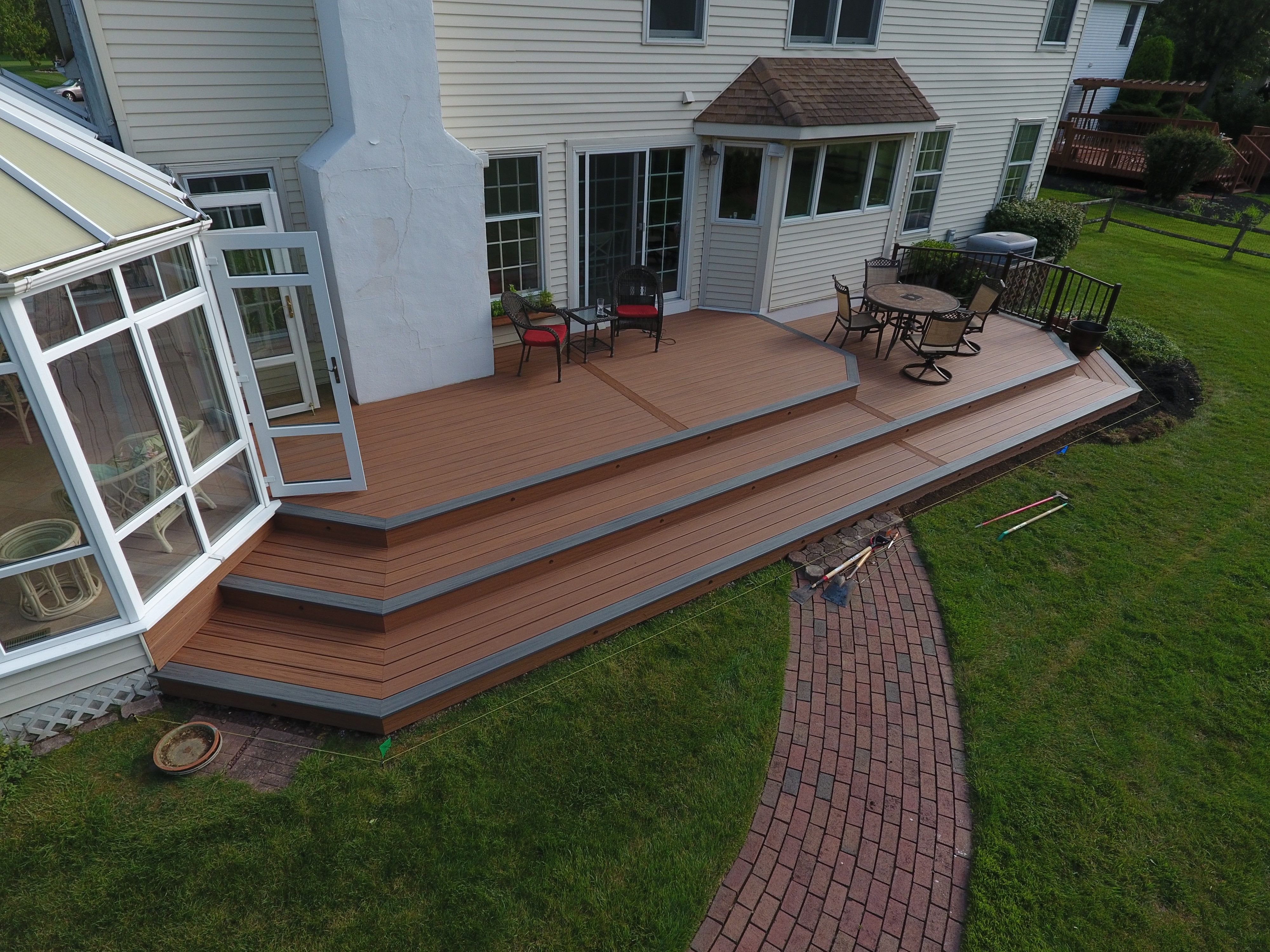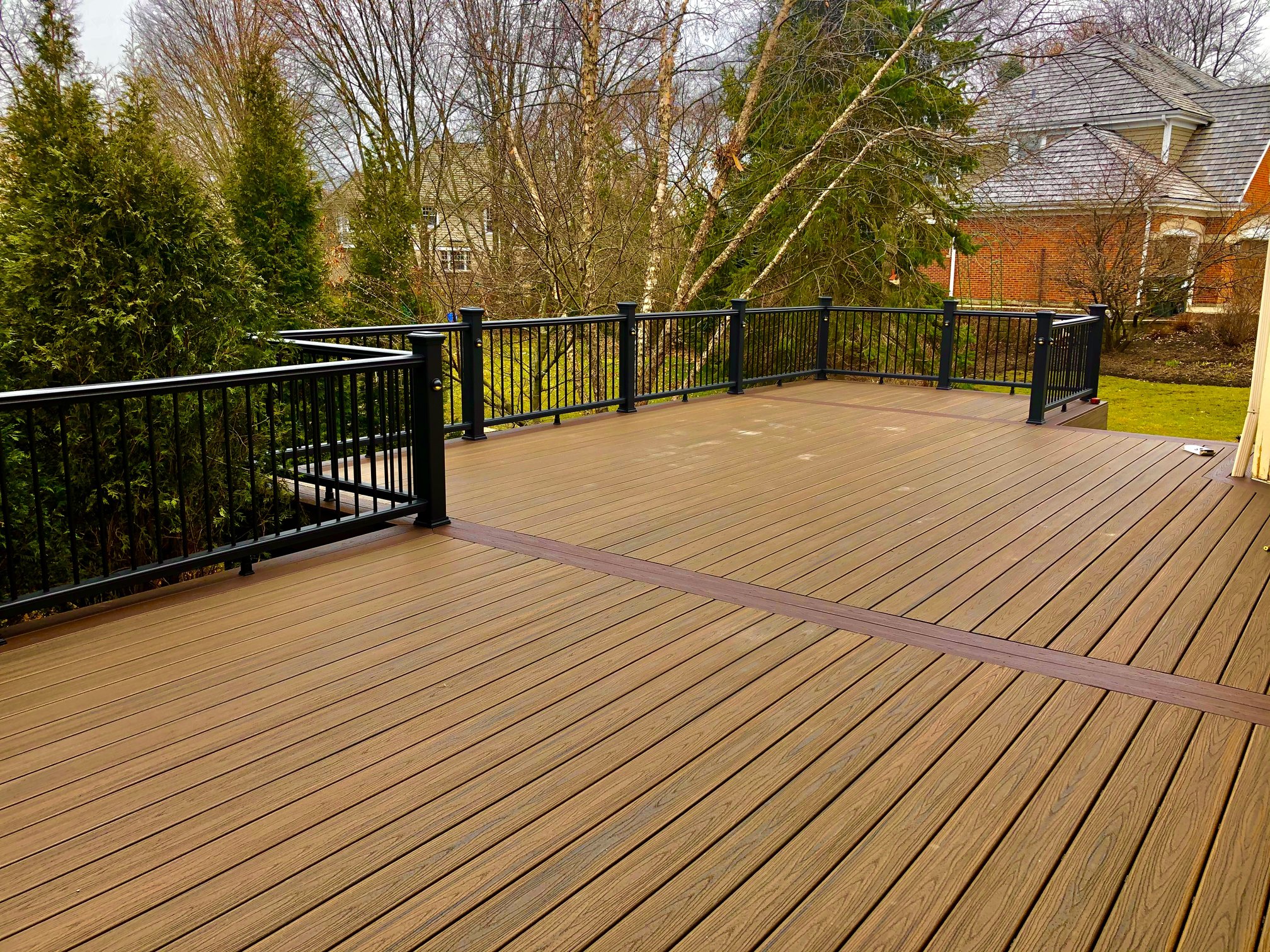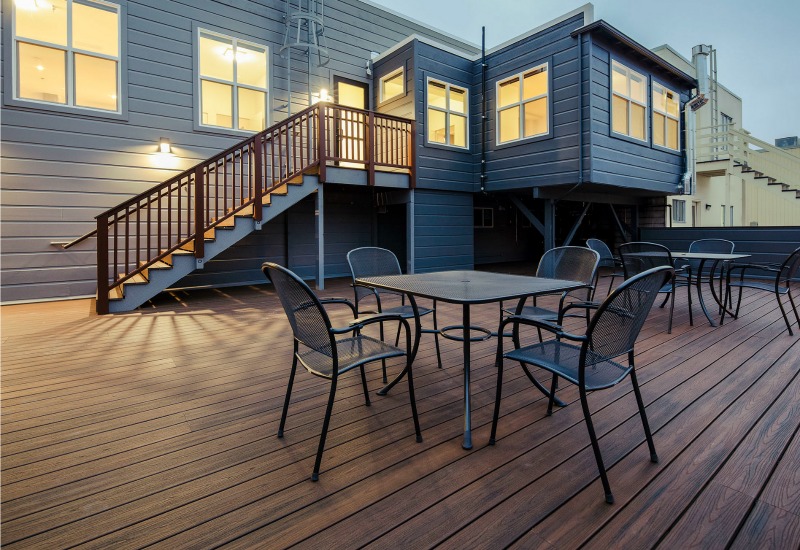
Longer boards: Up to 20 feet, which means fewer end joints. (Left to its own devices, wood inexorably turns gray.) Minimal fading: All composites turn a slightly lighter shade after the first two or three months in the sun, then the fading stops. Long life: Composites don't rot or attract termites, they can't warp or check, and you can go barefoot without fear of splinters. With the money you save by not using these coatings and cleaning materials, you can recoup the higher cost of composites in about five years. Reduced maintenance: Forget about having to bleach and stain wood every other year. Pros & Cons of Composite Deckingīefore you make a commitment, weigh the pros and cons of composites. Most composites meet California's strict Wildland-Urban Interface Building Code. Yes, but at a much higher temperature than wood. A simple scrubbing with soapy water and a soft bristle brush is usually all that's needed.Įverything you need to finish a deck-fascia boards, railings, balusters, treads, and posts-is made in matching colors using the same composite material. Fading, scratches, and stains usually aren't covered. Most manufacturers offer either a 25-year or limited-lifetime warranty on structural integrity some warranties are transferable from one homeowner to another. Run-of-the-mill boards start at $4 per square foot, while the premium products that closely resemble tropical wood run up to $7.20 per square foot. Photo by Suzie Gibbons/Gap Photos/Getty Images What Is a Composite Decking Board Made Of?
#TREX DECKING PRICES HOW TO#
Here’s a detailed review about composite decking, including how to choose the best boards, comparing costs, as well as installing and cleaning them. Once in place, they just do their job and don't need much more than an annual wash-down, leaving you plenty of time to work on your nap. The fact that composites don't feel or look like real wood is beside the point. That kind of popularity represents a big boost for the environment, too, because most composites are made from waste: sawdust, used plastic milk jugs, and shopping bags. A decade later, as companies began to offer new products that looked like fresh-cut cedar and Brazilian walnut but never turned gray, sales of composites took off.



When the less demanding plastic-composite decking appeared on the scene in the 1990s, homeowners happily adopted it, despite the higher price and limited color selection (gray). As idyllic as your backyard deck could be, maintaining that elevated expanse of lumber can be a downright chore.


 0 kommentar(er)
0 kommentar(er)
